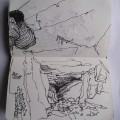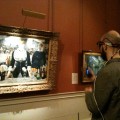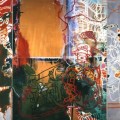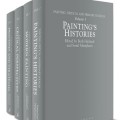A Fragment of Time in the Pure State; Painting in Search of Haptic Time
Journal of Visual Art Practice, 2009. Vol.8 nos.1 & 2 Pp 37–58
This article presents finding of a practice-based research project, conducted over a four year period, which proposes a new model for conceiving of painting’s temporality, aligned with Proustian ‘time regained’ and the Deleuzian ‘time image’. The research establishes an innovative practical method of exchange between the painting’s surface and the digital screen and demonstrates that a close dialogue with digital imaging offers contemporary painting practice an expanded topography and contributes to its ability to ‘think’ time in these terms. The method established is a means of theorising process and is presented in the text through sections of process notes, which map the development of a series of works that includes paintings and interactive digital pieces. This method builds upon two related AHRC funded projects (2004, 2006), and engages with current and historical debates around technologies in Fine Art practice to combine theoretical insight with the technical development of painting practice.
The theoretical framework, drawing upon a wide selection of critical, philosophical and literary material, creates a view of painting’s time in relation to haptic visuality and filmic time. The article introduces the notion of ‘haptic time’ as a way of conceptualising the outcome of a dialogue between painting and the digital, enabling a practice-based approach to the articulation of pure duration: Proust’s ‘fragment of time in the pure state’.
This edition of JVAP specifically addresses the ‘artist’s voice within academic research’ through an engagement with fine artists’ academic writing.






